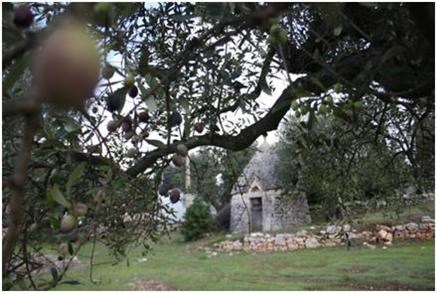
Having a sunrise exercise in the olive tree fields, enjoying a midday walk through the narrow cobble streets with Lego-like white tiny and lofty houses, getting the pleasure of the beautiful sunset over the vineyards scattered throughout the picturesque valleys. In the meantime, a few breaks to taste the local cheese, pasta and meat products and a sip or two of the best vines or liquors. Then, you already know why it is easy to say “La vita e bella” (Life’s beautiful), not taking the smile off your face, from down until dusk. This is the experience of the charming Italian villages in the South-East Region of Puglia.
Known for its beautiful nature, Puglia, the high heel of the “boot” of Italy, is a home of some of the most beautiful villages in Italy. One of them, Cisternino, in the Province of Brindisi, on 26 October 2013 opened its doors for the local governments from the Mediterranean, hosting the first conference of the most beautiful villages Network, organized by ANCI, the Italian Association of Municipalities and its partners.
“Small villages are to be considered the soul of our communities, that have not remained anonymous, but people-sized places, in Italy that is a symbol of beauty, and in Europe where we live in the context of a big global village”, said Fiorello Primi, the President of the Association “the Most Beautiful Villages of Italy”, that leads the newly established international network of “The Most Beautiful Villages of the Mediterranean”.
Participants had the chance to present the beauties of their towns and villages and discuss how they contribute to the sustainable development of their countries. The Conference concluded with a signing ceremony of a Memorandum of Understanding between the participants for the constitution of the association “the Most Beautiful Villages of the Mediterranean Area”, including members from Albania, Croatia, Bosnia and Herzegovina, Israel, Montenegro, Palestine, Slovenia, Spain, Turkey.
The programme included site visits to some of the most beautiful villages in Puglia. The host town, Cisternino, with its white washed, stone buildings with cool, shaded, cave-like interiors, narrow streets and churches, Locorotondo, known for its round historical centre and the great wines and Alberobello, the home of the unique Trulli house constructions, were a true inspiration for the participants, offering a snapshot of how sustainable development tourism could be organized to bring tourists and generate income, but also protect the natural and cultural heritage. Participants also had a chance to visit “masseria” (also called “agriturismo”), a typical farmhouse, with its accommodation capacities, restaurant, farm, and own production of meat, cheese, olive oil and wine.
After the conference, ANCI organized the final meeting for the project “A trans-local network for the cooperation between Italy and South-East Europe”, to present the results of the project. Amongst other activities, this project provided support to the NALAS newest Task Force in Sustainable Tourism in developing a position paper “SEE Tourism Goes Local” and a draft Sustainable Tourism Planning Toolkit.
The purpose of the Position Paper is to build a common understanding of what is sustainable tourism development at local level in SEE, to encourage sustainable tourism planning and development and to build a common reference point for local municipalities and local government associations, recognizing tourism as a relevant economic option which, in order to be successful, needs to be carefully planned and managed for continuous use in the future while still bringing benefits to the present.
In the Position Paper, NALAS states: “Tourism development is a multi-sectoral activity which takes place mainly at the local level and brings with it social, economic and environmental impacts. These require considerable planning to make the development outputs attractive to tourists while being sustainable, requiring a careful cooperation and coordination of both the private and the public sectors”.
In the upcoming period, NALAS will promote the position paper among all SEE local governments, will finalize the toolkit and will support strategic sustainable tourism planning throughout the Region.
For more information:
-Position Paper:NALAS POSITION PAPER “SEE TOURISM GOES LOCAL”.pdf
I Borghi Piu Belli d’Italia (The Most Beautiful Villages in Italy)